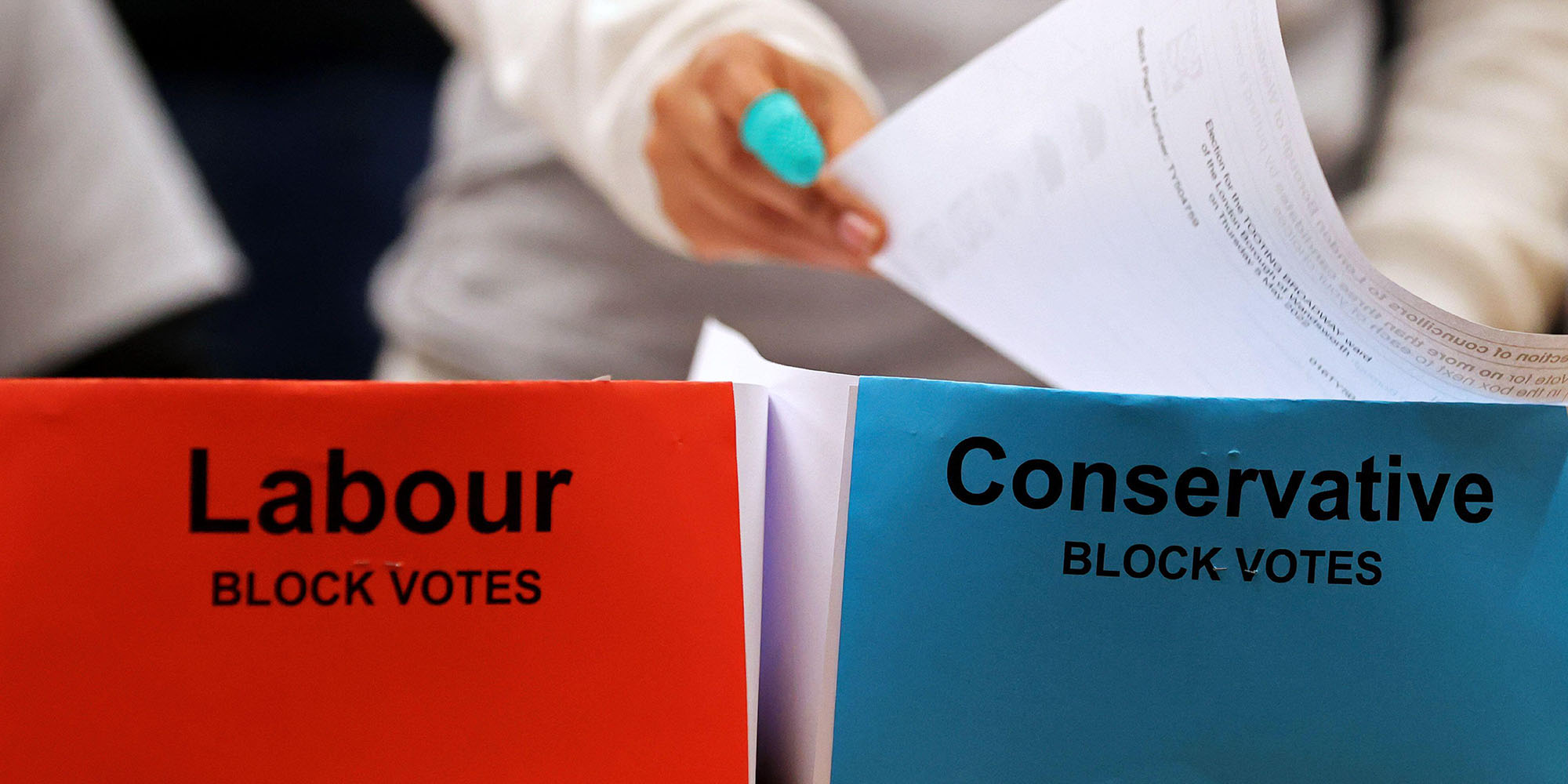
Local elections tell a national story
Thursday’s local elections were the first clear and real sign of the political pendulum swinging back in Labour’s favour.
After months of doubts in the opposition that it was too good to be true, the results highlight the clear and real prospect of Labour returning to power. Meanwhile for the Conservatives, it paints a stark picture of the blue wall and red wall crumbling before them.
Local elections are the opportunity to check in with the electoral mood. They offer a partial, incomplete view of what could happen in a General Election, but one that points to a brutal ejection from office for the Conservatives.
Party faithfuls in both Labour and the Conservatives will point to the overall voting numbers as a sign it is still all to play for. The BBC national vote share projection put Labour at 35% to 26% for the Conservatives, a smaller gap than many national polls currently suggest. Whilst these headline numbers suggest a hung parliament, the results and mood paint a bleaker picture for Rishi Sunak’s party.
The Conservative coalition is crumbling
Beyond just losing the typical political bellwethers that signal who will lead the next government – for example, the Conservatives losing Swindon and Plymouth to Labour – Conservatives saw areas previously counted as safe seats for the party slip away. Losing Medway to Labour and Stratford-upon-Avon and Maidenhead to the Liberal Democrats is approaching a political catastrophe for the party.
Repeating these results in a year would leave the Conservatives with a shell of the parliamentary party they currently have. Even a minor improvement would not avert a painful loss for the government and it means they need a plan to respond to these damaging defeats.
Fighting on two fronts poses significant political challenges for the government when it is fast running out of time. With around 18 months until an election, it needs to find a blend of policies that can appeal to the shires and northern communities that made up its successful electoral coalition. This is a tall order and means it must find policies it can deliver now with minimum fuss.
Labour’s march to power continues
Meanwhile, Labour has passed its first major electoral test since becoming the front-runner to form the next government. With it will come even greater scrutiny on what it plans to do, and what will form the basis of its manifesto. Starmer and his team will take nothing for granted and will continue the approach that has built this lead. Newly controlled Labour Councils will offer the first glimpse of the party’s style and priorities, with the leader of the opposition taking a special interest in their policy programmes.
Labour will also have an eye on the other opposition parties following Thursday. They will be hoping the Liberal Democrat and Green gains reflect the electorate’s willingness to vote for the candidate best placed to dislodge Conservatives and therefore are swayed to vote Labour in 2024. Starmer and his team may look for ways to encourage this in the months ahead, and thereby avoid a significantly larger contingent of third party MPs that they may need to rely on in a hung parliament.
The national impact of local politics
For businesses, the local election is the restatement of the political expectation. Labour is on the march to power, with the Conservatives wounded and needing a significant change in fortunes to avert a big defeat.
As parties respond to the shattering of the red and blue walls for the Conservatives, businesses must be alive to the policy responses and political opportunities this has created. The competitive electoral map may be wider than at any point in recent memory and with it comes the prospect for new political issues and debates to come to the fore.
To discuss these issues and what it means for you, get in touch with us at jamie.capp@wacomms.co.uk.